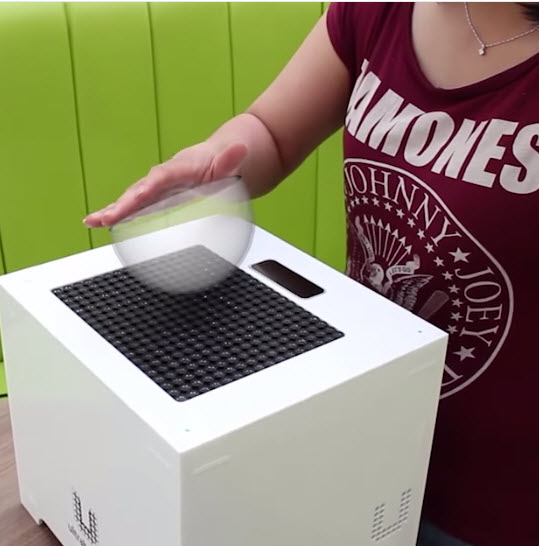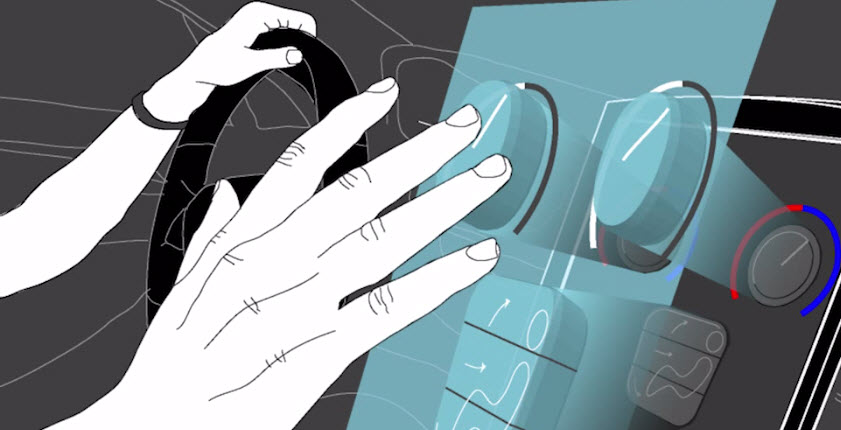Feeling virtual objects in mid-air using ultrasound
December 3, 2014

Focused ultrasound creates haptic shape of a virtual sphere (credit: Bristol Interaction and Graphics group, University of Bristol)
University of Bristol researchers have developed a method for using ultrasound to generate an 3D haptic shape that can be added to 3D displays so that invisible images can be felt in mid-air.
The new technology could enable surgeons to explore a CT scan by enabling them to feel a disease, such as a tumor, using haptic feedback.
By focusing ultrasound from a phased array of transducers, complex patterns of air disturbances can be felt as floating 3D shapes.
The researchers have also demonstrated visualization of the ultrasound patterns by directing the ultrasound at a thin layer of oil, allowing depressions or raised virtual objects to be seen of the surface.
“In the future, people could feel holograms of objects that would not otherwise be touchable, such as feeling the differences between materials in a CT scan or understanding the shapes of artefacts in a museum,” said research assistant Ben Long, PhD.
The research, led by Long and colleagues Professor Sriram Subramanian, Sue Ann Seah, and Tom Carter from the University of Bristol’s Department of Computer Science Bristol Interaction and Graphics (BIG) group, is published in the November issue of ACM Transactions on Graphics and will be presented at this week’s SIGGRAPH Asia 2014 conference, Dec. 3–6.

Car dashboard: touchless operation in eyes-busy settings (credit: University of Bristol)
Ultrahaptics, a spinoff company, has announced it has received a £600,000 seed round of investment to license the technology into “a diverse array of markets including consumer electronics, home appliance and automotive,” and will present the technology at CES in January.
University of Bristol | Rendering Volumetric Haptic Shapes in Mid-Air using Ultrasound
Abstract of Rendering volumetric haptic shapes in mid-air using ultrasound
We present a method for creating three-dimensional haptic shapes in mid-air using focused ultrasound. This approach applies the principles of acoustic radiation force, whereby the non-linear effects of sound produce forces on the skin which are strong enough to generate tactile sensations. This mid-air haptic feedback eliminates the need for any attachment of actuators or contact with physical devices. The user perceives a discernible haptic shape when the corresponding acoustic interference pattern is generated above a precisely controlled two-dimensional phased array of ultrasound transducers. In this paper, we outline our algorithm for controlling the volumetric distribution of the acoustic radiation force field in the form of a three-dimensional shape. We demonstrate how we create this acoustic radiation force field and how we interact with it. We then describe our implementation of the system and provide evidence from both visual and technical evaluations of its ability to render different shapes. We conclude with a subjective user evaluation to examine users’ performance for different shapes.